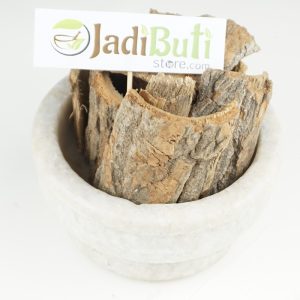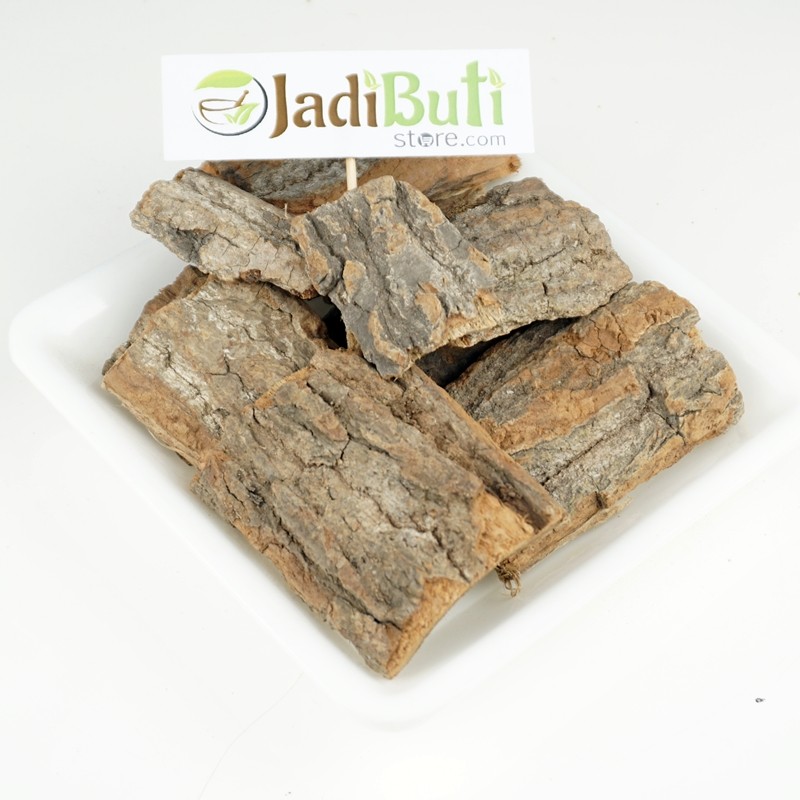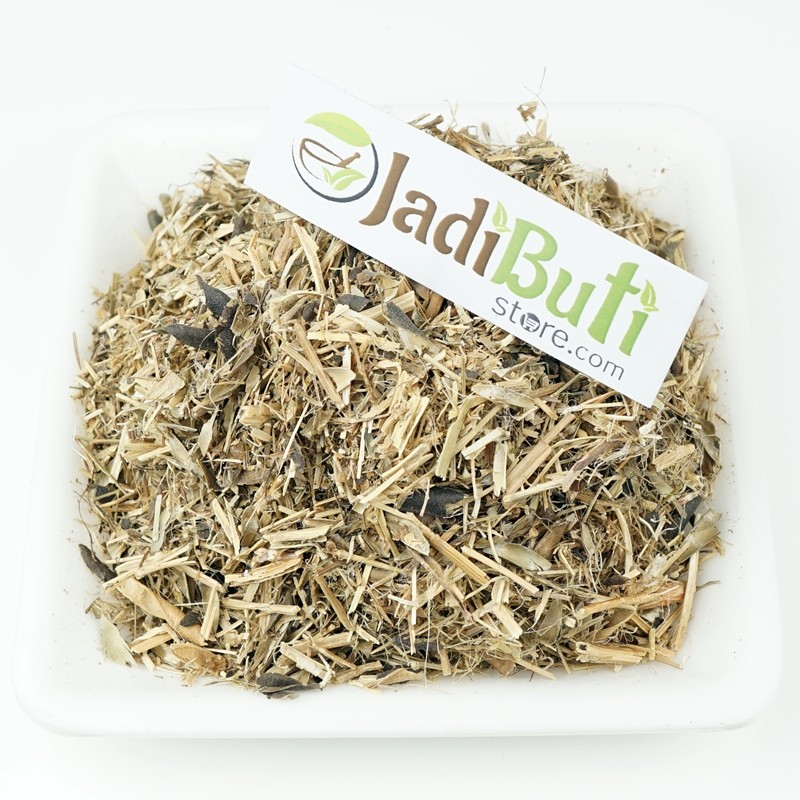Home
Showing 145–156 of 227 results
-
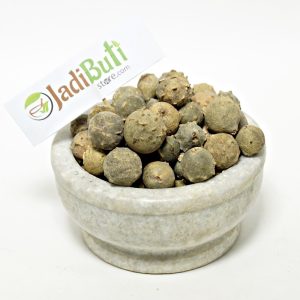
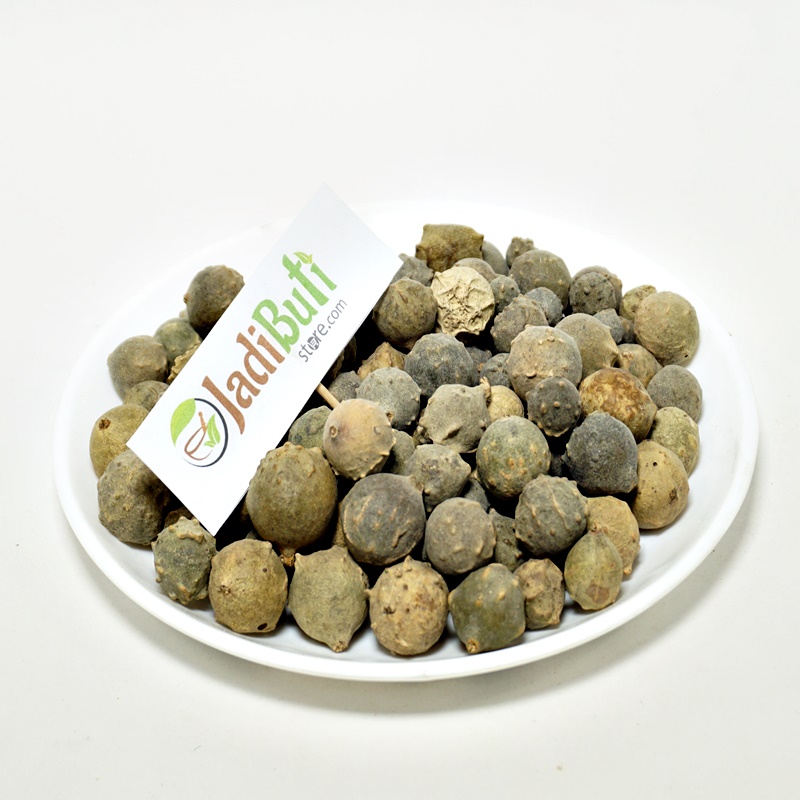
Majuphal – माजूफल – Gallnut – Quercus infectoria
₹220.00 – ₹1,710.00Quick ViewMajufal | Oak Gall | Gallnut
Scientific Name : Quercus infectoria.
Ayurvedic classification of Gallnut (Quercus infectoria):
Ayurvedic Classification Description Rasa (taste) Astringent Guna (qualities) Light, dry, piercing, and rough Virya(potency) Cooling Vipaka (post-digestive effect) Pungent Dosha effect Balances Pitta and Kapha doshas Karma (actions) Astringent, anti-inflammatory, anti-bacterial, anti-fungal, anti-viral, and styptic Dhatu (tissue) affinity Works primarily on the blood, plasma, and reproductive tissues Srotas (channel) affinity Works primarily on the circulatory, reproductive, and respiratory channels Prabhava (special effect) Helps to promote wound healing and prevent infection Active compounds and their benefits found in gallnut:
Active Compound Benefits Tannins Antioxidant, anti-inflammatory, and astringent properties Gallic acid Antioxidant, anti-inflammatory, and antimicrobial properties Ellagic acid Antioxidant, anti-inflammatory, and anticancer properties Quercetin Antioxidant, anti-inflammatory, and antihistamine properties Camphor Analgesic, anti-inflammatory, and antimicrobial properties Terpenoids Anti-inflammatory, antinociceptive, and antimicrobial properties -
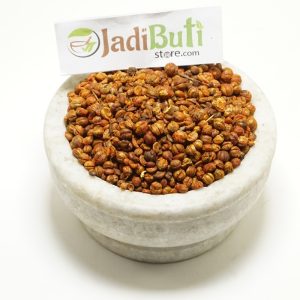
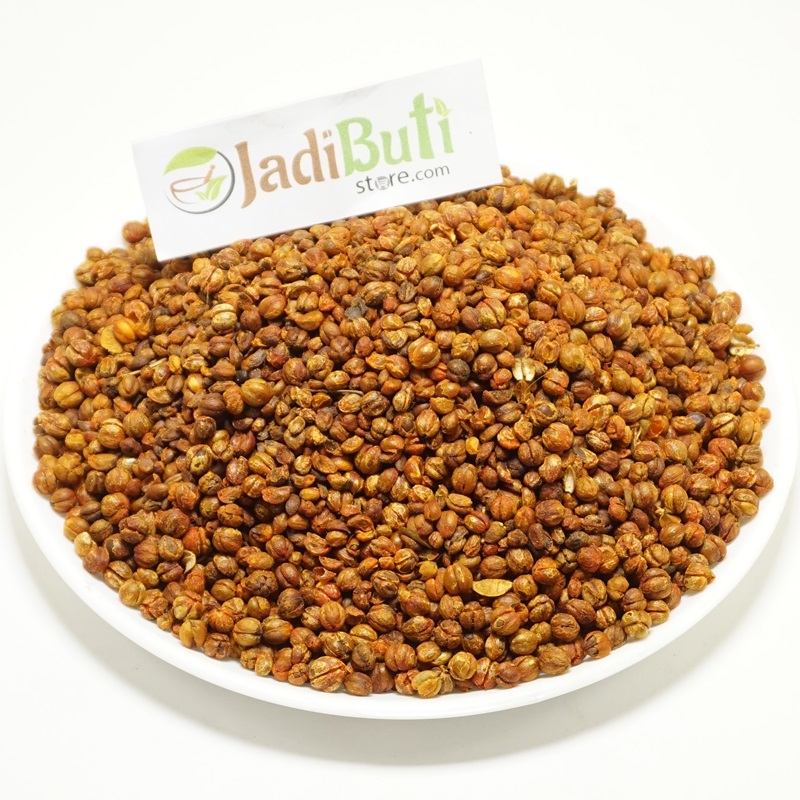
Malkangni – मालकांगनी – Black oil Tree – Celastrus paniculatus
₹760.00 – ₹6,290.00Quick ViewMalkangni seeds, Intellect Tree seeds
Scientific name: Celastrus paniculatus | Plant family: Celastraceae
Ayurvedic classification: | Parts used: Seeds
****** ***** Rasa (Taste) Tikta (Bitter), Katu (Pungent) Guna (Quality) Laghu (Light), Tikshna (Sharp) Virya (Potency) Ushna (Hot) Vipaka (Post-digestive effect) Katu (Pungent) Dosha Effect Balances Vata and Kapha doshas, increases Pitta dosha Action (Karma) Medhya (Nervine tonic), Vrushya (Aphrodisiac), Balya (Increases strength), Deepana (Digestive stimulant), Pachana (Digestive), Shothahara (Anti-inflammatory), Sangrahi (Astringent), Hridya (Heart tonic) -
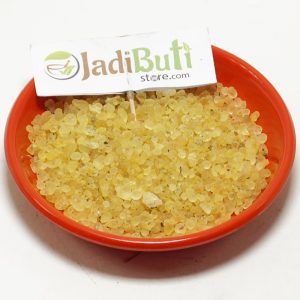
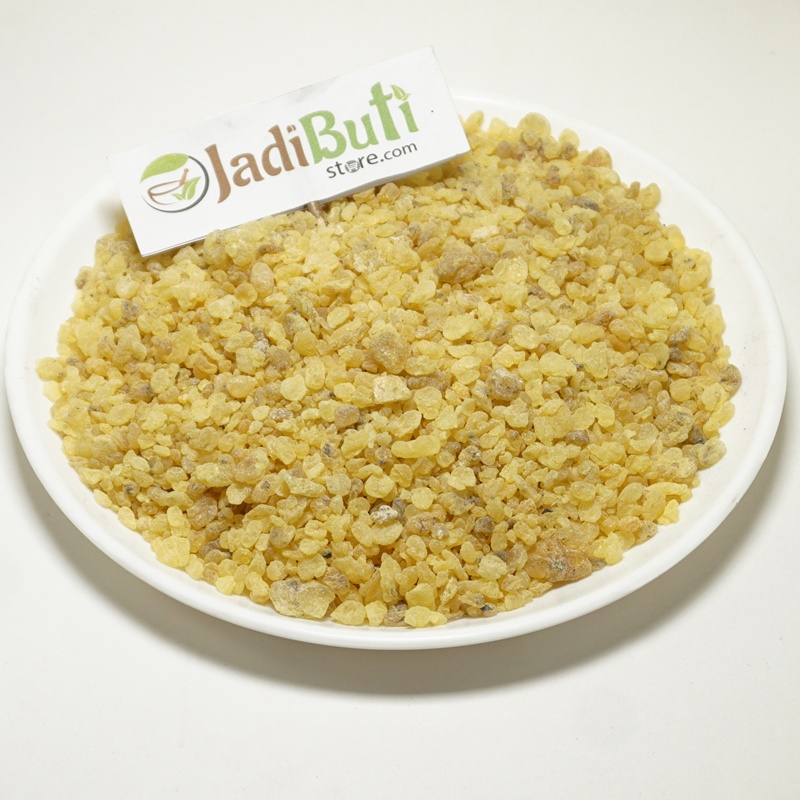
Mastagi Kota – मस्तगी कोटा – Mastic Tree – Pistacia lentiscus
₹650.00 – ₹8,695.00Quick ViewName: Mastic gum , Mastagi Kota | Other names: Mastiha, Mastica, Mastagi, Mastaki
Scientific name: Pistacia lentiscus | Plant family: Anacardiaceae
Parts used: Resin
Uses: Digestive health, oral health, anti-inflammatory effects, antioxidant properties, skin health
Dosage: There is no standard dosage for mastic gum, but supplements typically contain 500-1,000 mg per day. It’s best to follow the manufacturer’s instructions or consult with a healthcare provider for personalized dosing recommendations.
-


Mastagi Rumi – मस्तगी रूमी – Mastic Gum – Pistacia lentiscus
₹950.00 – ₹26,785.00Quick ViewOur mastic gum is carefully harvested and processed to ensure maximum purity and potency, providing you with a natural and effective way to support your overall health and wellbeing.
Our mastic gum is rich in antioxidants and has been shown to have powerful anti-inflammatory and antimicrobial properties. It may help to promote digestive health, support oral health, and improve respiratory function. Our mastic gum is also known for its potential cholesterol-lowering effects and blood sugar regulating properties, making it a great supplement for those looking to maintain healthy cholesterol and blood sugar levels.Our mastic gum is 100% natural and free from any synthetic additives, making it a safe and healthy supplement for daily use. mastic gum is gluten-free, non-GMO, and suitable for vegans and vegetarians.
-
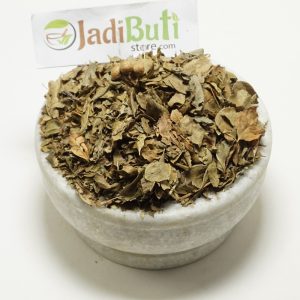
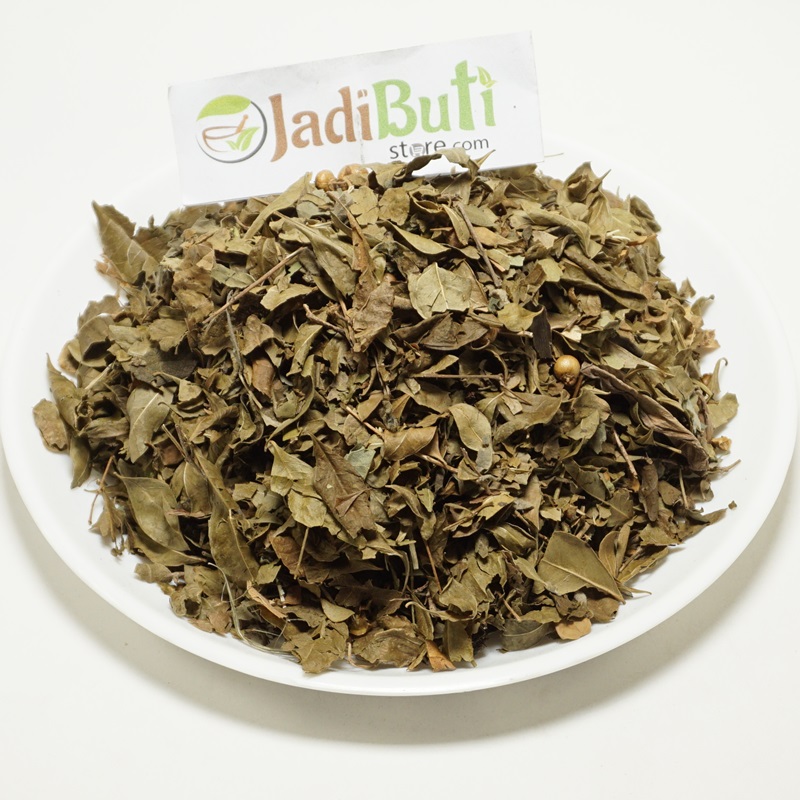
Mehndi Patta – मेहँदी पत्ता – Lawsonia inermis
₹90.00 – ₹720.00Quick ViewMehandi, Henna | Botanical name: Lawsonia inermis | Family: Lythraceae
Parts used: Leaves, bark, and roots | This product is Organic Henna Leaves Dried
Native region and distribution: Mehandi is native to North Africa, the Middle East, and South Asia. It is now widely cultivated in tropical and subtropical regions around the world.
Ayurvedic Classification Properties Guna (qualities) Cooling, astringent, bitter Rasa (taste) Bitter Vipak (post-digestive effect) Pungent Dosha effect Pacifies pitta and kapha doshas, but can aggravate vata when used in excess Dhatu (tissue) effect Acts mainly on the rakta dhatu (blood tissue) and also on the mamsa dhatu (muscle tissue) Srotas (channel) effect Acts mainly on the raktavaha srotas (blood channels) and also on the annavaha srotas (digestive channels) Health benefits:
- Cooling and astringent properties make it useful for treating conditions related to excess heat, such as fever, inflammation, and hot flashes.
- Bitter taste and digestive properties make it useful for improving digestion and eliminating toxins from the body.
- Can be used topically to promote healthy skin and hair.
- Has been traditionally used for its natural dyeing properties.
-
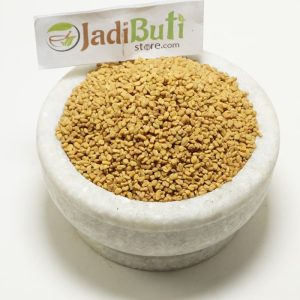

Methi Dana (Organic) – मेथी दाना – Fenugreek Seeds – Trigonella foenum-graecum
₹110.00 – ₹850.00Quick ViewMethi Dana – मेथी दाना – Fenugreek Seeds – Trigonella foenum-graecum.
Methi Name In Different Languages:
Methi in English Name : Fenugreek, Bird’s Foot, Greek Hayseed
Methi in Hindi Name : Methi
Methi in Latin name : Trigonella foenum-graecum Linn.
Methi in Urdu Name : Methi, Tukhme Hulba
Methi in Arabic Name : Hulba, Fareeqa
Methi in Bengali Name : Methi
Methi in Chinese Name : Hu lu ba
Methi in French Name : Fenugrec sénegré
Methi in German Name : Bockshornklee, Kuhhornklee, Griechisch-Heu
Methi in Gujarati Name : Methi
Methi in Kannada Name : Menthya
Methi in Kashmiri Name : Meeth
Methi in Marathi Name : Methi
Methi in Persian Name : Shamleez
Methi in Punjabi Name : Methi
Methi in Sanskrit Name : Methika, Methini
Introduction:
Fenugreek is cultivated in almost all the states. Vegetables are made from fenugreek leaves. Its seeds are used in a variety of dishes for diet and as a medicine. Flowers and fruits of fenugreek are found in the months of January to March. Fenugreek plants are one feet high. Its leaves are small and round-shaped. Fenugreek seeds are called fenugreek seeds. It is also found in the Jagannis. Fenugreek found in forests is of low quality. Vegetables of fenugreek granules are made in Rajasthan, besides the vegetables, fodder leaves are made from Dhokles, Mithai and Gotas. Some people make mixed greens of mung and fenugreek seeds. Apart from this, pickle of raw mango and mixing fenugreek and other spices are prepared in it. This pickle is delicious and quality. In winter, fenugreek is consumed mostly in most of the houses.
-
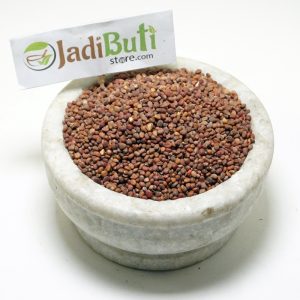
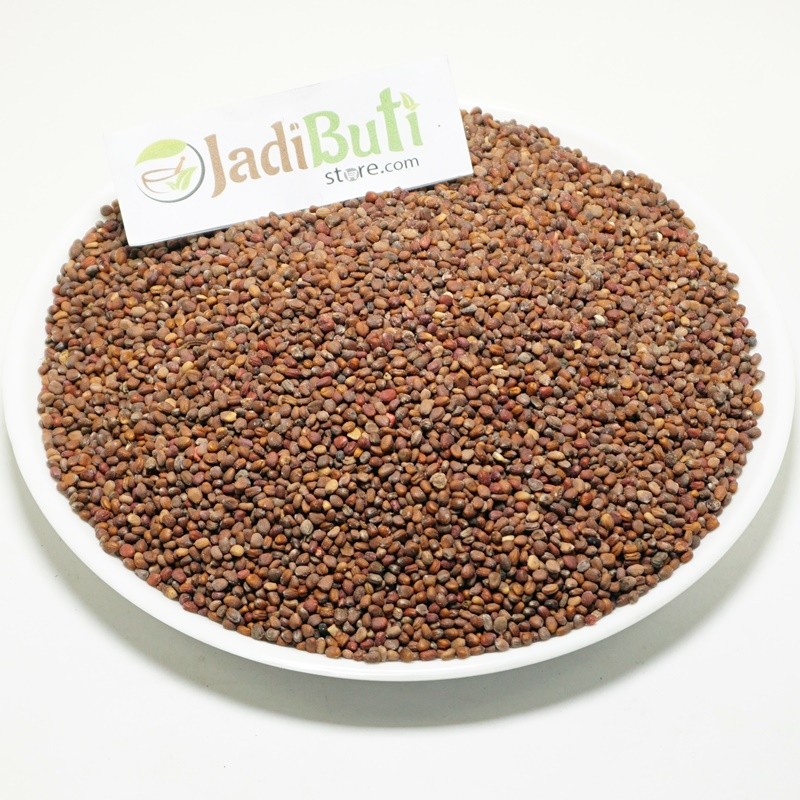
Muli Beej (edible) – मूली बीज – Radish Seed – Raphanus sativus
₹110.00 – ₹845.00Quick ViewMuli Beej (edible) – मूली बीज – Radish Seed – Raphanus sativus.
Name In Different Languages:
Muli Beej In English Name : Radish
Muli Beej In Hindi Name : Muli, Mooli
Muli Beej In Latin name : Raphanus sativus Linn.
Muli Beej In Urdu Name : Muli
Muli Beej In Arabic Name : Fujal
Muli Beej In Bengali Name : Mula
Muli Beej In French Name : Radis cultivé
Muli Beej In German Name : Garten-Rettich, Rettich
Muli Beej In Gujarati Name : Mulo, Mula
Muli Beej In Kannada Name : Moolangi, Moclangi gadde, Mullangi, Mugunigadde
Muli Beej In Marathi Name : Mula
Muli Beej In Persian Name : Turb, Turbuzah
Muli Beej In Punjabi Name : Mula, Mulaka, Muli
Muli Beej In Sanskrit Name : Moolaka, Mulaka
Introduction:
Radish is grown all over India. Radish is also grown in the form of carrot inside the ground in Kandrup. The main part of radish is two varieties – white and small white red. Its rounds are also other varieties. Radish is considered to be eaten in October-November. Radish is eaten raw. Greens of radish and radish leaves are also made. Mixing gram flour in radish leaves also makes delicious stirring. Oil from radish seeds emerges. Radish oil is heavy and colorless in weight. Eating raw radish in the middle of the food increases interest in eating. Sprinkle a little salt by spinning radish into radish pieces and eat it in the morning.
-
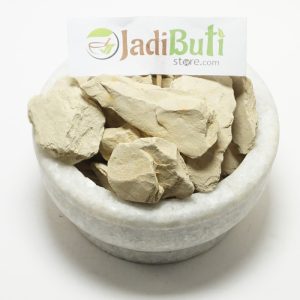
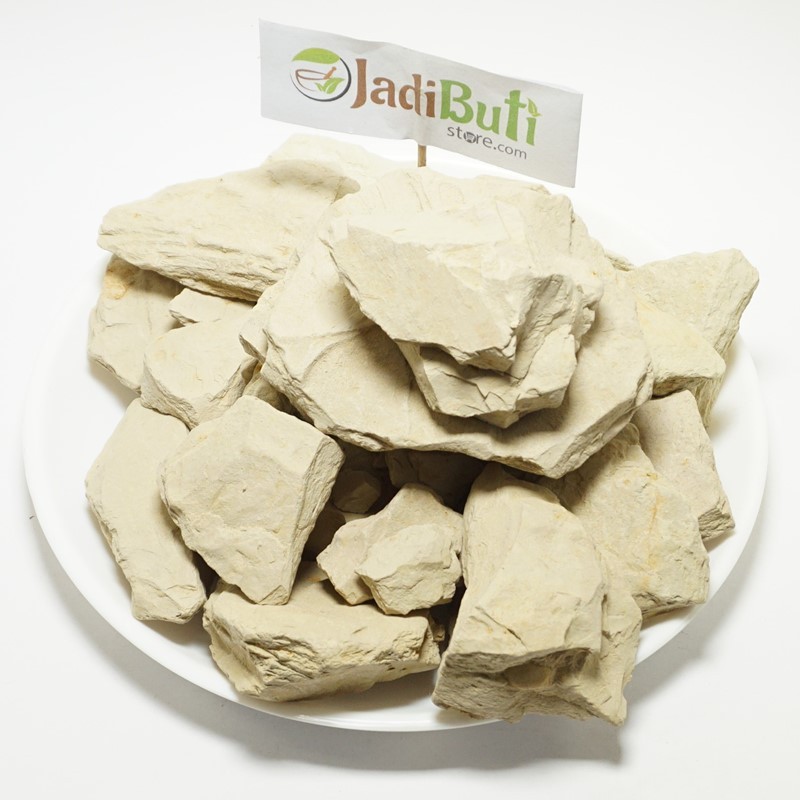
Multani Mitti (Without Toxins) – मुल्तानी मिट्टी – Fuller’s Earth Clay
₹160.00 – ₹695.00Quick ViewAyurvedic classification of Multani Mitti (Fuller’s Earth):
Ayurvedic Classification Description Rasa (taste) Astringent Guna (qualities) Light, dry, and cooling Virya (potency) Cooling Vipaka (post-digestive effect) Sweet Dosha effect Pacifies Pitta and Kapha doshas Karma (actions) Cleansing, purifying, cooling, and soothing Dhatu (tissue) affinity Works primarily on the skin and blood tissues Srotas (channel) affinity Works primarily on the rasa (plasma) and rakta (blood) channels Prabhava (special effect) Excellent for absorbing excess oil and toxins from the skin -
Sale!

 25%SOLD OUT
25%SOLD OUTMusli (Safed Musli) – सफ़ेद मूसली – White Musale – Chlorophytum Borivilianum
₹340.00 – ₹3,020.00Quick ViewSafed Musli | Musli White
Chlorophytum borivilianum | Product : Dried Musli Organic
Ayurvedic Classification Description Rasa (taste) Sweet, bitter, and pungent Guna (qualities) Guru (heavy), snigdha (unctuous), and vishada (non-slimy) Virya (potency) Cooling Vipaka (post-digestive effect) Sweet Dosha effect Pacifies Pitta and Vata doshas Karma (actions) Adaptogenic, aphrodisiac, immunomodulatory, galactagogue, and antioxidant Dhatu (tissue) affinity Works primarily on the reproductive and nervous tissues Srotas (channel) affinity Works primarily on the reproductive and nervous channels Prabhava (special effect) Increases desire and performance Active compounds & benefits found in safed musli (Chlorophytum borivilianum):
Active Compound Benefits Saponins Aphrodisiac, adaptogenic, and immune-boosting properties Polysaccharides Immunomodulatory and anti-inflammatory properties Alkaloids Antioxidant and anti-inflammatory properties Flavonoids Antioxidant and anti-inflammatory properties Phenolics Antioxidant and anti-inflammatory properties Proteins and amino acids Essential for growth and repair of body tissues Vitamins and minerals Essential for overall health and well-being



